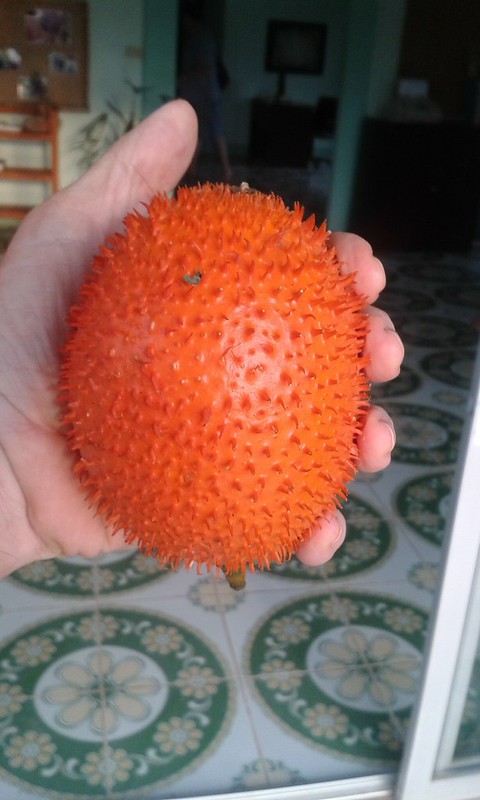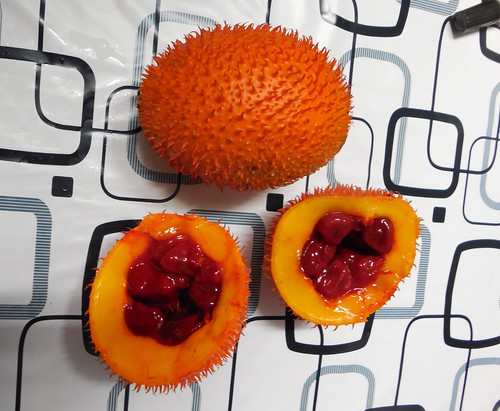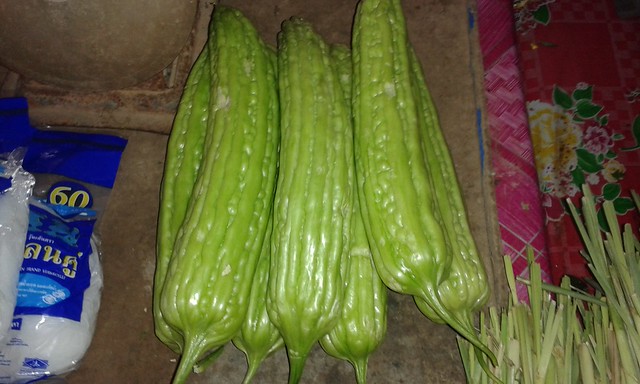I immediately recognized it as a fruit from the melon/squash family (Cucurbitaceae) because I had seen smaller ones growing in our neighborhood. I could remember, however, neither the English nor Thai name for it. (Our teammates told us the vendor had said it was called fakkhao). And I certainly had no idea how to eat it.
Since I had my computer open, I quickly found that its name is Spiny Bitter Gourd (Momordica cochinchinensis; Thai: ฟักข้าว), and it certainly seemed like an appropriate name.

The plant is related to the bitter melon**, a popular vegetable in some SE Asian cultures.
We took the fruit home and cut it open.

A quick taste of the orange flesh let us know quickly how it got its name: it certainly was bitter. However, we decided to suck the pulp on the seeds and it had a slightly sweet, pumpkin-like flavor. (Apparently the seeds are used to add a red color to some food dishes.)
Bitter.
Sweet.
Both in one.
So it struck me that the fruit is somewhat a picture of life. Our life gets filled with many kinds of experiences and some of them are sweet, but some of them are also bitter. Maybe the bitter parts make the sweet parts sweeter--like sucking on the red seeds AFTER eating some of the orange flesh.
I don't think it's possible to escape this life without having both bitter and sweet. The challenge is to get through it while still remaining sweet and not becoming bitter oneself. I've met many old people who have allowed their experiences to make them bitter, and they are certainly not pleasant to be around. People tend to avoid them--which make them even more bitter.
I don't want to end up that way. So I want to try to practice what the bitter people seem to avoid doing:
Forgive easily.
Don't hold onto grudges.
That way I can be more like the sweet smooth seeds of the Spiny Bitter Gourd and less like its prickly, bitter flesh.
As Paul writes in Colossians 4:6--Let your conversation be always full of grace, seasoned with salt, so that you may know how to answer everyone.
* Botanically, this is a fruit. Some however might consider it to be a vegetable. In a similar way to how people consider a cantelope to be a fruit, but its close relative and similar looking food, the cucumber, is considered a vegetable.
**
The bitter melon, which one can buy in the markets, looks like this. This is the cultivated version.

The wild version of the same species, however, looks much different.

When the wild bitter melon matures, it bursts open to reveal red seeds, similar to the Spiny Bitter Gourd.


No comments:
Post a Comment